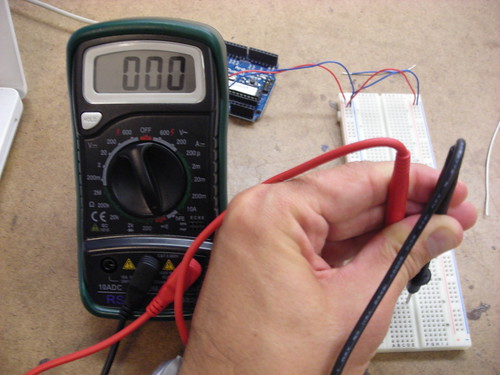The "Pancake"
For our Physical Computing midterm, we were split into groups and asked to create a media controller of our own devising. No limits or requirements were put in place, except that the controller would be a physical interface to the arduino, and would controller some external media device. I was teamed with the wonderful Amy Chien and Chris Alden, and the three of us came to the conclusion that we'd like to build something of an electronic musical instrument.
To start things off, we brainstormed about possible ideas for the media controller's interface. However, we came up with so many cool ideas that we almost immediately decided that we'd like to do multiple interfaces. This worked its way into a concept for a modular music table, that would be split into various pieces, and allow three individuals to collaborate using three different interfaces.
Hauling wood.
All three interfaces.
Once we had completed and tested the three interfaces, we brought them together to the table, and unified them into a single instrument. Each interface had its own arduino, which were then collectively wired into a labtop via a USB hub. Once all three arduinos were recognized on the computer, we then hooked them up to Max/MSP and created a patch that would listen for the serial values from each interface, and use them to control tonal output.
The pressure pad controlled pitch bending, the wind interfaces controlled the speed of the tone playback, and the sequencer controlled the notes being played over the loop. Once the patch was loaded, all three interfaces could be used simultaneously to control the computer's sonic output. You can see a demo of one of our classmates joining us in trying out the interface above.
Finally, we presented our project in class. Here you can see a brief clip of our presentation, which managed to go off without a hitch. Midterm, complete. Go Pancake!




























